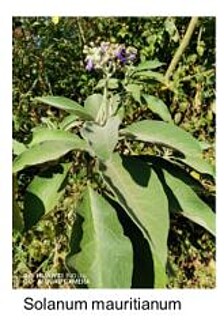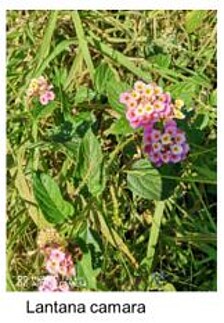Interactive effects of pollination and irrigation on Macadamia crop production
Mancha Lorraine Ramotjiki
Institute of Agricultural Sciences in the Tropics (Hans-Ruthenberg-Institute) (490), Garbenstr. 13, 70599 Stuttgart
Supervisor: Prof. Dr. Ingo Grass
Challenges.
The northern Limpopo Province is a major mainstay of South Africa’s subtropical fruit crop production, including commercially important crops such as mango, macadamia, lychee and avocado. Most of these crops are insect-pollinated and more targeted pollination schemes are required to close current yield gaps. Crop productivity is improved by ecosystem services, including pollination although these services can be impacted by the invasion of invasive alien plants (IAPs) surrounding the edge of the crops. The IAPs can support the insect pollinators outside the flowering period of crops although they can even attract more pollinators during the flowering period resulting in less productivity. Macadamia is a mass-flowering crop that is increasingly dominating the fruit crop landscapes of Limpopo. As of today, South Africa is the world’s largest macadamia nut producer. Moreover, macadamia is increasingly planted in regions formerly not used for crop production because of limited rainfall, resulting in croplands highly dependent on irrigation. Likewise, efficient irrigation schemes are needed because of increasing prolonged droughts and heat waves due to climate change, which are already severely affecting water supply in the region. Despite growing pressure on water resources and pollination services, the two have not been studied jointly before. Thus, their relative importance for macadamia productivity, as well as potential interactions between pollination, crop irrigation and rainfall remain poorly understood.
Objectives:
The three main research objectives of my project are:
I) To investigate and establish the role and importance of natural edge forest predominantly dominated by the invasive alien plants in supporting the flower visitors(insects) of macadamia before, during and after the flowering season of macadamia crop using standardized field experiments and surveys in Limpopo Province, South Africa.
II) To investigate the interactive effects of pollination and irrigation on macadamia nut production (incl. flowering, pollination rates, nut set, nut drop due to water scarcity, final nut yield, quantity and quality).
III) To develop spatiotemporally optimized and integrated water and crop management systems that close macadamia yield gaps, enhance farmers’ capacity to adapt to climate change, and mitigate conflicts of water between different stakeholders in Limpopo Province.
Methodology:
Fieldwork will be conducted on 10 macadamia farms in the Levuvhu Valley at the southern foothills of the Soutpansberg, Limpopo Province. Annual rainfall in the region varies markedly from 600–1600 mm along a 40 km east–west gradient. The valley is dominated by extensive monocultures of macadamia (Macadamia integrifolia, M. tetraphylla and hybrids) and produce the second largest amount of macadamia nuts in the country. The orchards are interspersed with remnants of natural vegetation with riparian forests as well as woodland. However, these remnants are invaded by IAP’s, predominantly Caesalpinia decapetala (Roth) Alston, Solanum mauritianum (Scopoli) and Lantana camara (Lanca). The Luvuvhu valley is also among the most invaded regions in the province of Limpopo.
In my first field season, Flower visitor’s visitation will be conducted in the 10 established sites in the Levubu valley. Data will be collected within three session: before, during and after the flowering season of macadamia crop. The sites will be 1km or more apart and between 0-300m elevational gradient. In each site, transect walks will be done at the permanent marked 100m long and 4m wide transects of macadamia next to the edge and at the forest edge that include all the native and invasive herbaceous and woody plants. During the flowering period of macadamia, transect walk observation will be conducted directly at the crops next to the forest edge to study the local competition or facilitation for flower visitors. Each flowering plant will be noted, and floral density estimated, for the macadamia crop 10 racemes will be tagged at the start of observation during the flowering period which will later be counted for nutset after the flowering period.
In my second field season, I will do standardized studies of pollination services, water management and crop yields of the 200 trees in the previously established 10 sites. The “macadamia year” starts with the dry winter season (April-July). From April 2021 onwards, I will monitor precipitation on all farms with rainfall gauges and irrigation per block based on farmers records and own measurements. Soil moisture will be recorded at regular intervals at the tree level. Macadamia flowers from August-October during which pollinators (wild pollinators, managed honeybees) will be monitored on all trees (4 x 15min observation) and sampled for subsequent species identification. Initial nut set (3 weeks post-flowering), nut drop, final nut set (15 weeks post-flowering) and crop yield (February-March harvest) will be recorded per tree.
Expected results.
First field season:
- Macadamia nutset to decrease with the extremity of invasion.
- Alien invasive plants will attract more pollinators than native plants outside the flowering period thereby facilitating pollinators to Macadamia during the flowering period with more flower density.
- There will be changes (abundance and diversity) in insects’ visitation outside and within the flowering period.
Second field season:
- Detailed data on local and landscape scale drivers of macadamia crop yields, including irrigation, rainfall, pollination management, wild vs. managed pollinators, and associated interactions.
- Temporal dimensions of nut development in dependence of these drivers (flowering onset, initial nut set following pollination, nut drop, final nut set and crop yield)
- Additional detailed data for modelling (spatial and temporal variation, farm-surrounding landscape complexity for wild pollinators, precipitation, local management incl. fertilization)




